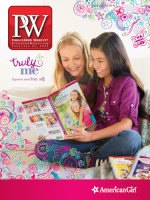Without a doubt, children’s and teens’ librarians are vitally important. But why does it feel like adult library services get so much of the profession’s attention? Consider this a conversation starter: eight questions, issues, and pet peeves about children’s and teens’ librarianship.
1. A makerspace boom? Hasn’t it been fun to watch adult services librarians get their undergarments in a twist over makerspaces? In discovering that libraries are places of creation, not just consumption, many adult services folk act like Francis Crick and James Watson developing the model for DNA. But children’s and teens’ libraries have been makerspaces for decades: just try to find a kid walking out of a library program without carrying something he or she made. So why do so few adult service librarians ask the children’s and teens’ librarians about their maker experiences? Perhaps it reflects librarianship’s compartmentalization, with a dollop of condescension toward kids’ services?
2. Common Core: I get it. For school librarians, the Common Core standards are their marching orders, and librarians have an important role in helping their communities implement them. But when I hear about public libraries dramatically altering their children’s services to fit the Common Core, I cringe. Yes, public libraries want to be good partners with our schools. But there are better ways to collaborate than spinning around to support whatever controversial initiative the education-industrial complex is peddling at the moment. Public libraries have their own history, and mission. In the end, isn’t staying true to that better for the kids?
3. The sixth graders: Sixth graders are a challenging group: some look like they’re seven, others look like contestants on The Bachelor. But the one thing that unites them is their belief that they no longer belong in the children’s room. At the same time, most teen libraries serve seventh grade and up, and if they open the door to sixth graders, they risk turning off the teens. Does anyone have a solution? Do we have to create three youth libraries: children, teens, and sixth graders?
4. What “silo” problem? For many years, library administrators have wrung their hands over so-called silos; that is, the way areas specializing in different ages work independently of one another (and sometimes at cross-purposes). I am here to say that silos are not necessarily a bad thing. Sure, I want everyone in my library to share the same mission and to support everyone equally. But I’ve found that children’s and teens’ libraries that operate with their own staff and culture, as well as a good bit of autonomy, are more likely to foster innovation and creativity, with the kids as the beneficiaries.
5. The hoarding: It’s not always about the stuff, people! I swear, if Harvard University vacated the Widener Library and the children’s department of a midsize public library moved in, within six months they would fill that sucker up with stuffed animals, old puppet theaters, empty oatmeal cartons, broken die-cut machines, and worn-out books that might, someday, be used again for holidays or summer reading. Is this the best use of space?
6. The leadership lapse: I’ve served on plenty of hiring committees, and when it comes to management positions, I estimate that applicants with a background in adult services outnumber youth librarians three to one. I’m sure there are many reasons for this—not least of which is that many children’s and teens’ librarians love their work and don’t aspire to administration. But that should change. Nothing prepares one better for running a library than managing a children’s or teens’ department. And the best way to have strong, innovative children’s and teens’ library services is to have former children's and teen's librarians at the top.
7. Where’s the teen room? The most important actions I’ve ever taken as a library manager were to establish places for teens. Years back, when I was in an urban branch, it was just an alcove with two sofas, some book racks, and a YA librarian. More recently, it is a 2,000-sq.-ft. library with a focus on digital media. But in both cases, giving teens a stake in the building led to a dramatic increase in usage. Yet library after library I visit still lack teen areas, despite hundreds of square feet dedicated to housing extra copies of old adult bestsellers. How much longer can this go on? As the saying goes, shouldn’t we get ’em while they’re young?
8. The term youth librarian: I’ll admit, it’s sometimes convenient to conflate children’s and teens’ services into “youth” services (as ALA does with its Youth Media Awards). But I suspect the term youth librarian comes from administrators looking for a cheaper way to serve anyone between birth and whatever age they’ve chosen to mark as adulthood. As for the notion that you can be a “youth” librarian—finger puppets and preschoolers in the morning, Arduino and robotics in the afternoon—good luck! In my opinion, there are children’s librarians and teens’ librarians. Libraries need to hire both and let them do their jobs.
Brian Kenney is director of the White Plains (N.Y.) Public Library, and a former editorial director of Library Journal and School Library Journal.



 Volume 262
Issue 07
02/16/2015
Volume 262
Issue 07
02/16/2015





